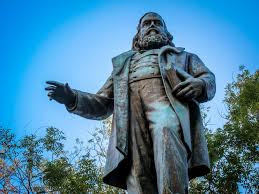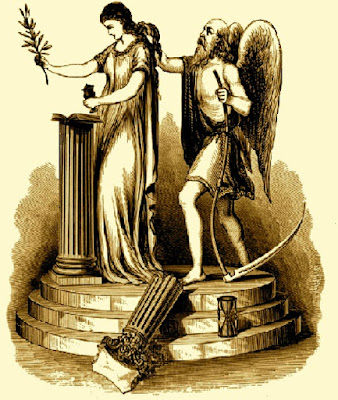 |
| Courtesy NBC4-Washington |
The soul hath its senses, like the body, that may be cultivated, enlarged, refined, as itself grows in stature and proportion; and he who cannot appreciate a fine painting or statue, a noble poem, a sweet harmony, a heroic thought, or a disinterested action, or to whom the wisdom of philosophy is but foolishness and babble, and the loftiest truths of less importance than the price of stocks or cotton, or the elevation of baseness to office, merely lives on the level of commonplace, and fitly prides himself upon that inferiority of the soul’s senses, which is the inferiority and imperfect development of the soul itself.
Albert Pike
Morals and Dogma
The above is excerpted from Albert Pike’s lecture in Morals and Dogma for the 5° of the Ancient and Accepted Scottish Rite of Freemasonry: the Perfect Master Degree. By “perfect,” this lecture intends another Masonic lesson in achieving equilibrium for the self and harmony in the world.
The adjective “perfect” that we use in the English language derives from the French word for “flawless” and “complete.” It is a coinage as apt for use by those engaged in the good work, square work of operative masonry as it is for those in the speculative art. Otto Jespersen, one of the great linguists, said:
The difference between the Preterit and the Perfect is in English observed more strictly than in the other languages possessing corresponding tenses. The Preterit refers to some time in the past without telling anything about the connection with the present moment, while the Perfect is a retrospective present, which connects a past occurrence with the present time, either as continued up to the present moment (inclusive time) or as having results or consequences bearing on the present moment.
Perfect, as in connecting past to the current moment.
 |
| Courtesy Shelton Herald |
Albert Pike was a complicated man. Yes, he served in the Confederate army for several months during the Civil War. He was, in fact, a general, until he resigned. Because of this brief military background the “news media” keep referring to his statue in Washington, DC as a Confederate statue. It was not. It was a monument erected by Scottish Rite Masons to honor Albert Pike the Freemason.
In Freemasonry, it was Albert Pike who provided Scottish Rite rituals to Prince Hall brethren so that they too could have Scottish Rite Masonry. It was he who eliminated the medieval religious bar in the Ancient and Accepted Scottish Rite so that Masons who are not Christian may advance to the Rose Croix Degree and beyond—and he did that about a century before the Northern Masonic Jurisdiction got around to emulating that example.
You will see all over the internet today libels about how Pike was a member—or even the founder—of the Klan. He was no such thing. You also will see the accusation that he owned slaves. I have no idea about that, but Pike was a lawyer who moved about the country; he was not a farmer on a plantation.
The mobs in the streets will not be appeased. They are not going to stop destroying historical symbols until there is no more memory of Fill in the Blank. Unchecked by civil authorities, the mobs will continue rampaging. Today’s violence may be against figures, real or imagined, of the Confederacy, but tomorrow it surely will be against the Founders of the United States and many, many, many others who contributed to the complex, but magnificent, history of this unparalleled society.
You destroy a people by obliterating their history.
Religious community mocked and marginalized? Check! The family unit
discredited and dispersed? Check! Symbols and traditions of common
identity rejected and renounced? Double Check! Education crimped to stunt
the human mind? Triple Check! And the mobs will continue erasing the
historical record itself until people won’t have a past they could protest.
“Who controls the past controls the future,” George Orwell instructed in 1984,
and “who controls the present controls the past.” Oh, that reminds me: They
will defeat and erase language also.
 |
| Courtesy WTOP |
The destruction of this statue in the middle of the nation’s capital while the police watched speaks to the impotence of Freemasonry in the United States today. The Scottish Rite Southern Jurisdiction had years of opportunity to retake possession of and relocate the monument. I appreciate how just maintaining the House of the Temple requires so much in precious resources, but an effort to raise funds and devise a plan toward that goal could have been possible had they cared—but they didn’t. So now what’s left of this historic likeness of the man who all but singlehandedly ensured that the Southern Jurisdiction would endure into the twentieth century and beyond will be trucked to some government graveyard where the remains of the mob’s Two Minute Hates will be dumped. He’ll be in good company with Christopher Columbus, George Washington, Thomas Jefferson, Abraham Lincoln, and many, many, many others.
Some history, from three years ago, here.






















































































